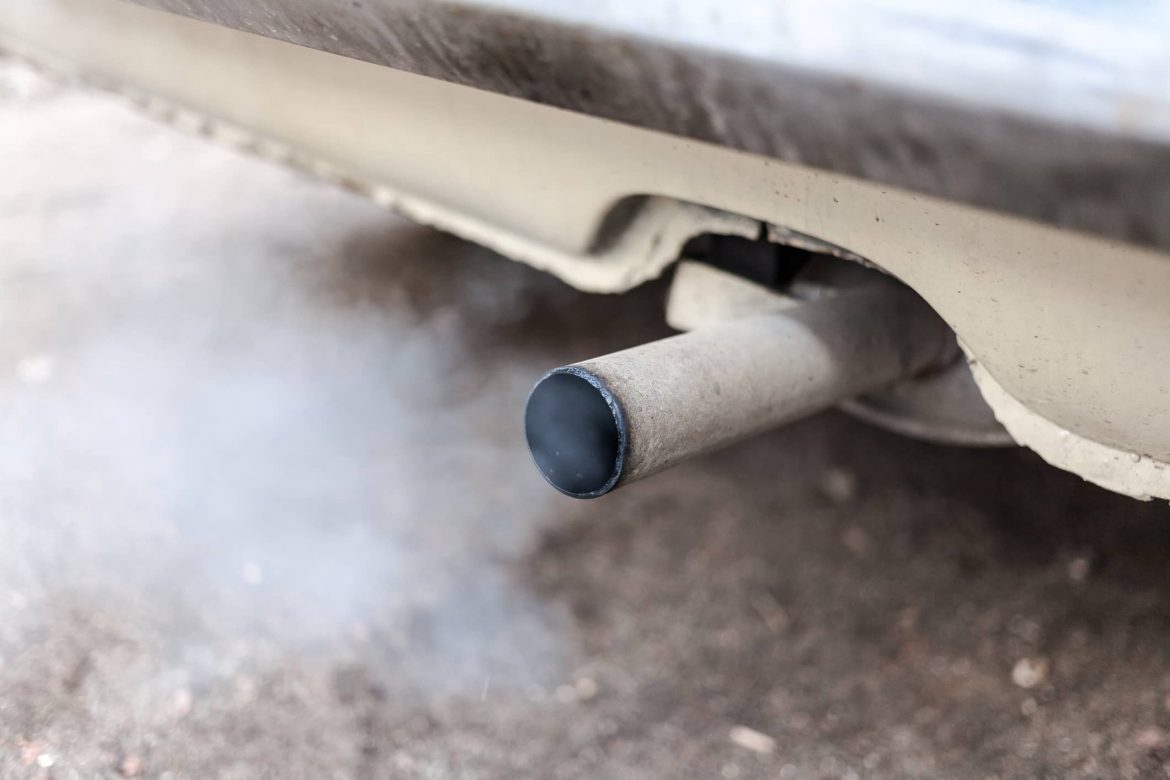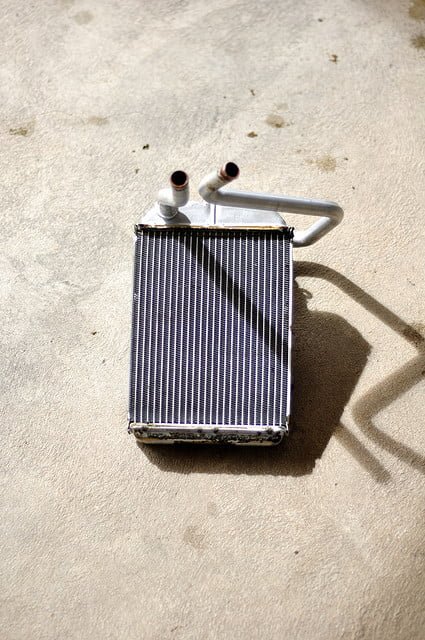Imagine life inside a car engine. Fire and fuel combine to create small explosions hundreds of times every minute, causing air to expand and push metal pistons up and down inside metal cylinders continually. Hot gas produced by these reactions is cooled, circulated and blown through a tube out the back of the vehicle. Through all of this, we can thank our cooling system for keeping us safe and the vehicle running.
To maintain the delicate equilibrium inside an automobile engine, it is critical that the cooling system be maintained in good order. The key to that is inspecting the radiator regularly, keeping coolant topped off and flushing the cooling system periodically. We’ll discuss how the cooling system in your vehicle works and how often you should flush your radiator.
How Does the Cooling System Work?
In order to keep its various parts from overheating, an antifreeze-water mixture, generally described as coolant, is circulated from the radiator through tubes all around the engine. The heat from the engine is absorbed by the coolant and passed through the radiator into the air, or back into the passenger compartment when the heater is turned on.
We drive our vehicles in some extreme conditions, from below zero in some climates to hundreds of degrees Fahrenheit. This requires a coolant that is capable of absorbing a lot of heat while remaining in liquid form at a wide range of temperatures. Water is an excellent absorber but it freezes at 32 degrees and varporizes at 212 degrees, both too high and too low to perform in an automobile. Commercial antifreeze is designed to remain liquid through the temperature range of ordinary automobile use (and even some extraordinary use—like at 40 degrees below zero) while regulating the temperature of the engine.
Why Do I Need to Flush My Cooling System?
As the coolant runs around and around the engine, covering hundreds of miles along the way, it picks up chemicals, rust and debris from inside the passageways in which it travels. This gunk can clog up the pipes and water pump, corrode metal parts of the engine or become embedded in the radiator, preventing the outflow of hot air and reducing the effectiveness of the cooling system.
To combat this, manufacturers recommend a periodic coolant flush. Flushing the radiator removes deposits and rust that gum up the works, lubricates the water pump with the additives in new coolant, and prevents new buildup. In addition, a radiator flush is a good time to inspect the cooling system—the radiator and tubes leading off it—for leaks, cracks and corrosion.
How Often Should I Flush My Radiator?
A quick internet search of this question will leave you sure of one thing: even the experts do not agree. You will find a wide range of responses to this question from supposed automotive gurus, from every two years to every 100,000 miles or 10 years. The one thing they all agree on is this: consult your owners’ manual.
Most automobile manufacturers recommend flushing the cooling system every 30,000 miles or five years, whichever comes first. Some new vehicles are now equipped with extended-life coolant that can last up to 100,000 miles. It is wise to follow the service interval guidelines in the owners’ manual. If you drive your car or truck often in extreme conditions, you might want to flush your coolant more often.
Unlike other automobile repairs and preventative maintenance, flushing a cooling system is so easy and inexpensive that almost anyone can do it, so, flushing more often than is necessary causes no harm other than some wasted antifreeze and a half day of labor. Drained coolant that appears clear and free of debris is a signal that the radiator doesn’t need be flushed as often.
How to Flush a Radiator
Flushing a radiator is a relatively easy and inexpensive proposition. All it takes is some time. Here are the eight key steps to flush the coolant and ensure the cooling system will perform effectively for the next few years.
- Prepare the tools. Flushing a radiator can be completed with some simple tools. A screwdriver or wrench, a rag, a funnel, a bucket or drain pan, safety gloves and goggles, antifreeze, distilled water and a flushing solution.
- Inspect the cooling system. Check the radiator for holes or damage. Run your eyes along the hoses and make sure they are in good condition and well secured. Look under the radiator for leaks. Everything must be in good working order before the new antifreeze is introduced into the system.
- Cool down the vehicle. Before touching any parts of the engine, the vehicle must have time to cool down after use. Wait 30 minutes after the automobile has been in operation before embarking on the rest of the steps.
- Drain the coolant. Using a rag to protect your hand from any steam that might escape, open the radiator cap. Then locate the radiator drain plug and place the drain pan beneath it before removing it. Allow the liquid to drain for 10 minutes and then tighten the drain plug back on.
- Flush the radiator. Although flushing a cooling system is easy, this step may take hours because it may involve multiple flushes and long waits in between. With the radiator empty, pour BlueDevil Radiator Flush into the radiator using a funnel. The highly engineered chemicals are specially formulated to remove grease, grime, rust and other impurities from the radiator and cooling system that result from normal vehicle use, even in high-mileage vehicles. BlueDevil Radiator Flush costs less than $10 and prevents hundreds of dollars in repairs. Follow that up by pouring in distilled water until the fluid level rises inside the radiator to just under the cap.
- Gentlemen (and ladies), start your engines. Turn the heater all the way up and start the car. Allow it to idle for 10 minutes so the solution of radiator flush and water can churn up any debris, chemicals and corrosion. After 10 minutes, turn off the engine and allow it to cool for 30 minutes.
- Drain the flush. Once the engine has cooled, repeat the draining steps so the mixture drains into the drain pan. Inspect the liquid. Unless it is nearly clear, repeat the flush with distilled water alone, allotting 30 minutes between flushes for the vehicle to cool. Repeat until clear water drains into the pan. This is the part of the process that takes the longest.
- Pour in new antifreeze. With the radiator flushed and spotless, add the amount of antifreeze noted in the owners’ manual. Most antifreeze purchased at automotive stores, department stores and supermarkets are premixed and can be added as is. Pure antifreeze needs to be mixed with water. After introducing the new coolant, allow the car to idle for 10 minutes to circulate it, and the job is done.
How Much Does It Cost to Flush a Radiator?
Assuming you already own a funnel, a rag and the screwdriver or wrench needed to loosen and tighten the radiator drain plug, flushing the radiator requires the purchase of antifreeze, distilled water and radiator flush. A gallon of antifreeze and a bottle of BlueDevil Radiator Flush each cost less than ten bucks. Five gallons of distilled water also costs less than $10. That brings the entire cost of a radiator flush to around $30 and an afternoon.
That is a small price to pay for keeping your vehicle and its passengers operating at their preferred temperatures.
BlueDevil Products can be found at AutoZone, Advance Auto Parts, O’Reilly Auto Parts, NAPA, Parts Authority, and other major auto parts retailers.
BlueDevil Products can be found on Amazon.com or at AutoZone, Advance Auto Parts, O’Reilly Auto Parts, NAPA, and other major auto parts retailers.
Related Articles



